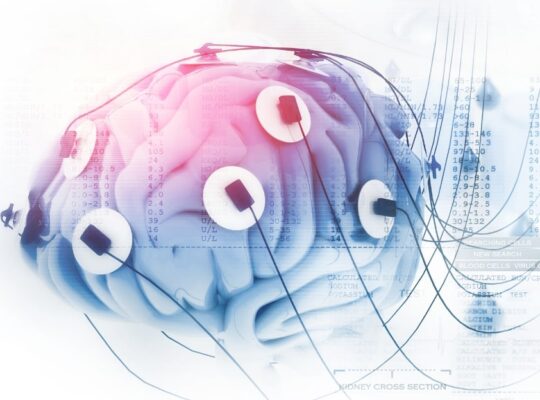We often hear it said, “You are what you eat,” but it may be more accurate to say, “You are what you think.” As it turns out, our thoughts hold way more power and weight than we tend to believe. The thoughts that pass through our minds are responsible for everything that happens in our lives.
It is our predominant thoughts that influence our behavior and attitudes and control our actions and reactions. Thus, if our thoughts are negative those negative thoughts will inform negative attitudes and behaviors that will result in negative actions and reactions.
For instance, if you hold the belief that you are incapable of accomplishing a task or goal, or simply are incapable in general, you’ll align your actions and reactions in a manner that supports that belief. On the other hand, if our thoughts are positive those positive thoughts will inform positive attitudes and behaviors that will result in positive actions and reactions.
The key to understanding how to transform negative thoughts into positive ones as a means of self-transformation is first understanding in its entirety the negative impact negative thinking has on our attitudes, behaviors, actions, and reactions. Then, understanding in its entirety the positive impact positive thinking has on our attitudes, behaviors, and reactions.
It is with this foundational understanding that one can then explore the various methods for changing thoughts while demonstrating how using those methods to transform thoughts then leads to self-transformation.
What is Negative Thinking
Negative thinking as defined by Rethink Mental Illness refers to a pattern of thinking negatively about yourself and your surroundings in a way that significantly impacts the way you view yourself and/or the world and in a manner that interferes with daily tasks and functioning.
There are various potential causes of negative thinking, some of which can be indicative of mental illness such as depression or generalized anxiety disorder (GAD), and many others which are a part of regular life. The Power of Positivity outlines three leading causes of negative thoughts being fear of the future, anxiety about the present, and shame about the past.
Fear of the future is characterized by uncertainty about what the future might hold. Many who have a fear of the future engage in a behavior known as catastrophizing or the tendency to predict failure and disaster.
Anxiety about the present is characterized by excessive worrying about situations or circumstances currently being experienced. Often individuals visualize worst-case scenarios derived from a fear of losing control over the situation at hand.
Shame about the past is characterized by dwelling on past mistakes and failures far more than others. This dwelling on the past limits progression and forward movement of any kind. These leading causes of negative thinking and others take our minds captive and go on to shape what we believe, how we feel, and the decisions we make given the circumstances in our lives.
Research suggests that a prolonged period of negative thinking can result in depression where we are more likely to get stuck in cycles of repetitive ruminative thought that have a negative emotional tone.
These types of thoughts can consist of judging ourselves as unworthy or unlovable or anticipating a negative outcome or future for ourselves. These ruminative cycles magnify feelings of anger, shame, or sadness and interfere with motivation to try to move on from or solve the problem at hand.
Stanford University scientists studied what occurs in the brain during depressive rumination in a July 2015 study, Depressive Rumination, the Default-Mode Network, and the DarkMatter of Clinical Neuroscience. The study was authored by J. Paul Hamilton and colleagues and published in the journal Biological Psychiatry.
The study statistically combined several prior research studies using meta-analytic tools and concluded that depressed people had increased functional brain connections between the default mode network (DMN) and the subgenual prefrontal cortex (PFC). The DMN is a part of the brain that is activated when we self-reflect. The subgenual PFC helps direct the DMN towards reflecting on and trying to solve the problems which the brain considers most pressing or essential for survival.
This process is useful if reflection is used to help us to make meaningful changes in our lives. However, in depression the subgenual PFC malfunctions causing the normal self-reflection process to become stuck in a negative, self-focused, and withdrawn state.
This causes a continual focus on our problems and flaws in a way that then impacts our behavior. We become demotivated and are less likely to engage with the world in order to solve problems or alter outcomes.
The Implications of Negative Thinking
The implications of negative thinking on the mind are significant. Simply thinking something negative has the ability to cause the negative thing to manifest in our lives, with no action on our part. This was seen by researchers in San Diego who examined the death records of nearly 30,000 Chinese Americans and compared them to more than 400,000 randomly selected white people.
As reported in The Lancet, researchers found that Chinese Americans die significantly earlier than normal (by up to five years) if they have a combination of disease and a birth year noted by Chinese astrology and Chinese medicine as ill-fated. The research showed that the more connected Chinese Americans were to traditional Chinese superstitions, the earlier they died. When the data was reviewed it revealed that the reduction in life expectancy could not be explained by genetic factors, lifestyle choices, patient behavior, the skill of doctors treating the individuals, or any other variable.
Ultimately, they concluded that their Chinese beliefs were the reason behind their earlier deaths. The belief that they could die younger because they were “hexed by the stars” manifested as a shorter life span.
A different study also looked at the notion of thoughts impacting physical health outcomes found that 79% of medical students reported developing symptoms suggestive of the illnesses they were studying.
The findings seemed to suggest that the constant focus on those particular illnesses they were studying led to a hyper-focus on and paranoia about contracting those specific illnesses. Thus, that mindset of thinking they would get sick then created conditions within the body that allowed sickened to manifest.
Negative thinking can also impact the brain. A 1990 study published in the Journal of Clinical Psychology looked at the impacts of worrying on the completion of a performance task. Study participants were asked to sort objects into two categories. Individuals who reported worry 50% of the time demonstrated a major disruption in the ability to sort objects as the difficulty of the sorting activity increased.
A follow-up study confirmed the assertion that there was decreased performance due to the increased levels of negative thoughts. Essentially, when presented with a complex task, negative thinking inhibited the ability of the brain to process information clearly.
Another impact of negative thinking can be its impact on the physical body. When people engage in negative thinking it automatically triggers a state of panic or stress in the body that affects the nervous system.
When the sympathetic nervous system is aroused it results in physiological responses such as rapid heartbeat, the tension in major muscle groups, and even diversion of blood circulation from major muscle groups to smaller groups which impacts the heart, lungs, and brain.
There is also the release of adrenaline and cortisol (the stress hormone) which can increase heart rate, raise blood pressure, induce migraines (headaches), and other negative physiological responses.
As the body responds physically to the initial negative thoughts more negative thoughts become triggered by the physical response of the body. Over time, this continued cycle of negative thinking triggering stress and physiological response followed by more negative thoughts and more stress and physiological response can lead to long-term health problems.
Conditions such as cardiovascular diseases, insomnia, high blood pressure, ulcers, stroke, chronic pain, migraines, a weakened immune system, and even substance abuse can all stem from negative thinking. Research has even found evidence that suggests links between negative thinking inducing stress which in turn can lead to fertility issues and speed up the process of aging.
Negative thinking can also be so detrimental because the implications of it extend far beyond the mind, brain, or body. Negative thoughts inform our attitudes which impact our behaviors which influence our actions. One study showed that when pessimists were faced with a disappointment, they tended to develop the attitude that the situation was outside the realm of their control and made no attempts to do anything about it.
In this instance, it was seen that the belief that the situation was outside of their control then led them to engage in inactivity. Meanwhile, that same study showed that optimists tended to focus on what they could control and as a result took steps to make a change.
What is Positive Thinking
Positive thinking is about adopting a mindset that approaches life’s challenges with a positive outlook and adopting a positive attitude about yourself in the midst of flaws and mistakes. It’s not the exclusion of bad events or negative characteristics about oneself but shifting to see the best of a negative situation and finding the good about yourself even when flaws are present.
Psychologist Martin Seligman frames positive thinking in terms of an individual’s explanatory style, or in other words the way you explain why events happen. Those with an optimistic explanatory style tend to give themselves credit when good things happen and blame outside forces when they experience negative outcomes. They are also more likely to see negative events as atypical and temporary.
Meanwhile, those with a pessimistic explanatory style tend to blame themselves when bad things occur and don’t give themselves adequate credit when they experience success. They are also more likely to view negative events as expected and lasting.
What Are the Implications of Positive Thinking
The implications of positive thinking weigh far better for our mind, body, and behaviors. Positive thinking completely counters the negative side effects that come with negative thinking. Research has shown that a pattern of positive thinking leads to an increase in positive emotions.
Researchers Ben and Brown found a relationship between joy and gratitude whereby having thoughts of gratitude makes us more joyful. Researchers have also found that positive thinkers tend to make people more resilient. Resilience refers to one’s ability to cope with challenges. Positive thinking seems to assist people in managing their stress, ward off depression, and develop vital coping tools to help them navigate challenges that do arise.
Research has also pointed to the role positive thinking plays in the physical body. Immunity is one area where this has been particularly evident. A study conducted by researchers Segerstrom and Sephton found that people who were optimistic about a certain area of their lives possessed a stronger immune response than those who held a negative view of the situation.
A separate study found that activation in brain areas associated with negative thoughts and emotions led to a weaker immune response to the flu vaccine.
Additionally, positive thinking also has the ability to impact our behavior for the better. The Mayo Clinic reported a number of health benefits linked to optimism which included a reduced risk of death from cardiovascular problems, less depression, and a prolonged life span.
When data was assessed it was seen that individuals were leading healthier lifestyles as a result of their optimism. Their positive attitudes and thinking helped them cope better with stress and obstacles and aided them in avoiding unhealthy behaviors. As a result, their overall health and well-being improved.
Another study also demonstrated this by showing how optimists coped better with stress than pessimists. Researchers found that when optimists encountered a disappointment, they were more likely to focus on things they could do to resolve the situation.
Their positive thinking informed their behavior and led them towards a productive course of action. Pessimists on the other hand, when faced with disappointment simply assumed that the situation was outside their realm of control and that they were incapable of changing it. Their negativity informed their inaction.
How to Implement and Practice Positive Thinking for Self-Transformation
There are several ways an individual can go about practically implementing and incorporating positive thinking in their daily lives. Each of the following practices first shapes the mind to think more positively, so that positive attitudes can be formed, and positive actions and behaviors made.
COAL Attitude
COAL stands for curious, open, accepting, and loving. This is a principle promoted by psychiatrist and mindfulness expert Dr. Daniel Siegel whereby individuals are better able to cope with their critical inner voice. The critical inner voice is an internal dialogue that drives self-blame, self-loathing, and rumination.
It feeds feelings of shame and fear and leads us towards behaviors and actions that are self-limiting and/or self-destructive. Adopting a COAL attitude works against the inner critic by helping individuals use curiosity and openness to address challenges ad adversity, while simultaneously embracing themselves with love and acceptance.
Adopting this more curious and open attitude towards challenges and a more accepting and loving attitude towards self is a process that first begins with recognizing the negative voices and destructive thoughts you hold. It is only through acknowledgment of those negative self-views that one can begin to change them, and thus change themself.
Working to trace these negative thoughts of self back to their place of origin is the best route to completely unroot the negative thoughts so they can be replaced with positive ones. This may require working with a therapist or a licensed professional to unpack situations from childhood or trauma that may have initiated the negative line of thinking about yourself you now engage in subconsciously.
The next step in this process after identifying the negative self-views is to practice actively stopping those thoughts when they arise in the mind. This means avoiding the tendency to allow negative thoughts to take you towards a downward spiral.
Rather, halting those negative thoughts in their tracks and consciously choosing to replace them with positive thoughts. By actively engaging in transforming negative thoughts about yourself into positive thoughts about yourself, you can transform the way you view yourself and make positive choices that align with that view of yourself.
Research from Dr. Kristin Neff indicates that self-compassion which is generated from thinking and speaking positively about ourselves is associated with greater emotional resilience, more caring relationship behavior, more accurate self-concepts, less reactive anger, and less narcissism.
This is because self-compassion is based upon a basic sense of worthiness as a human being, whereas self-esteem is built upon evaluations. Thus, the self-compassion fostered via positive self-thought and self-talk allows us to relate to ourselves in a kind, connected, and clear-sighted way even in the midst of failure, imperfection, and perceived inadequacy.
Growth Mindset
The growth mindset is characterized by the belief that your abilities can be developed. This differs vastly from a fixed mindset which is characterized by the belief that you are born with a certain number of fixed traits and talents. Adopting a growth mindset allows you to tap into greater inner potential and foster the same self-compassion noted in the COAL attitude. It is the understanding that any perceived area of a current deficit is simply an opportunity for growth that allows individuals with a growth mindset to navigate challenges with resilience and make choices that lead them towards more success, deeper understanding, and improved outcomes.
Research shows that individuals who possess a growth mindset tend to have a more optimistic outlook that allows them to better adapt to change, better embrace challenges and risks, and have enhanced self-awareness. Each of these is necessary in order to transform yourself for the better. An optimistic outlook sets the tone and expectations for how one faces challenges.
When you understand that a lack of present knowledge is temporary and that the opportunity exists to gain the needed knowledge to meet/exceed the challenge, you are in a better position to thrive rather than crack under pressure.
The ability to accept change enables those with a growth mindset to be in uncomfortable situations with a deeper understanding that the discomfort and uncertainty in the present will make way for new knowledge and understanding via processes of exploration and investigation.
The ability to better embrace challenges and risk is a means by which more knowledge can be obtained, and more skills can be developed.
Affirmations
Affirmations are a powerful tool when it comes to changing thoughts, we hold about ourselves because they can reshape our inner dialogue. Most people have an inner dialogue that is critical and negative.
Affirmations are a practical and intentional way to reshape the beliefs we hold about ourselves and our abilities, thus empowering us to take more action in our lives. According to Dr. Walter E. Jacobson, an affirmation is a statement used to reprogram the subconscious so that we begin to believe and then create the reality we desire. Affirmations help us to actualize what we want by helping us to believe, at first a subconscious level and then at a conscious level, that what we want is possible and attainable.
Analytic Mind
Tapping into the potential of the analytic mind is also a string strategy for transforming our thinking and segwaying new positive thoughts into positive transformation.
The analytic mind is the complex reasoning process that includes self-awareness where we are able to step back from our current thoughts, feelings, and experiences in order to observe them, manipulate information in our minds, and subsequently solve problems. This process is made up of the following steps: observing, reflecting, solving, planning, focusing, and imagining.
Observing
Observing is a vital part of the process needed to lead to self-transformation because it is deeply tied to our awareness, and awareness is needed before any improvements can be made. Self-awareness helps us become more aware of the choices we have and the choices we make.
Additionally, we are able to explore how the choices we make, the feelings we feel, and the thought we think either help us forward or hold us back. It is self-observation and the accompanying self-awareness that typically moves us to change our actions or surroundings for the better.
Reflection
The next step in this process is reflection, which encompasses those activities that allow us to explore our experiences in a way that leads to new understanding and appreciation.
Reflection becomes the place where learning can occur because it allows us to think back, observe ourselves in action, and determine whether the action taken was with replicating or determine if adjustment is needed. Our reflection will either produce models of thought and behavior that we seek to continue, or it will offer critical warnings to signal us as to what we should avoid in the future.
Problem Solving
The next step in this process is that of problem solving. This involves our ability to take immediate issues and problems and either find solutions or find understanding at the. Problem solving is a method that involves the following steps: defining a problem; determining the cause of the problem; identifying, prioritizing, and selecting alternatives for the solution, and then implementing that solution.
By carefully working through each of the outlined phases in the ‘solve’ step of the analytic mind’s self-improvement process, one can properly address and resolve an issue in a timely manner. Additionally, the resolution and process of coming to that resolution will provide valuable knowledge that will promote growth and learning.
Planning
Planning, the next step, allows us to use forward thinking to prepare for potential outcomes. Planning is a responsible and necessary part of self-transformation because the fact is that there are times where our best laid out plans fail to solve the identified problem.
A lack of planning in these scenarios equates to a complete breakdown. However, having a backup plan on hand is a means of anticipating unexpected problems which will help to alleviate stress in the instance that a problem arises because you will be prepared to handle it. Ultimately, planning is about preparation. It’s about considering what might happen or what could happen (without veering into an unhealthy obsession over ‘what if’ scenarios) and ensuring there are secondary measures in place to cope should a breakdown of the first option occur.
Focus
Another part of the analytic mind process is the element of focus. Focus is about our ability to sustain attention on items and/or matters of significance. It is about whether or not we can avoid the kinds of distractions that will hurt our efforts to grow and mature. Focus requires us to concentrate on and analyze relevant information in a critical and effective manner.
The focus factor is so significant because it is the portal to all thinking. Our perception, memory, learning, reasoning, problem-solving, and decision-making abilities are all heavily linked to how well we can attend to pertinent information and block out irrelevant information.
Without focus there is no way to attend to relevant information long enough to make critical observations. Without focus, the analysis required to reflect would not be possible.
Without focus, it would be impossible to sort through the data and information in order to come to a reasonable solution for an issue. And, without focus, the ability to forecast and think ahead in order to plan for the future just simply would not take place.
The fallout from a lack of focus would be a lack of effectiveness, a decrease in efficiency, and an inability to obtain optimal levels of productivity, if any productivity at all. Distraction would lead to poor analysis of information and data, which would lead to flawed logic and faulty decision making. Thus, establishing focus is essential for self-transformation.
Ultimately, if we cannot focus long enough to identify and change the thoughts which are the starting line of our attitudes, actions, and behaviors then our ability to change ourselves for the better becomes significantly limited, if not completely stunted.
Imagination
The final part of this specific process is imagination, which gives us the ability to visualize possible outcomes and see how certain scenarios may play out. It takes imagination to view problems from new perspectives. It takes imagination to visualize and conceptualize how various solutions to a problem would work.
It gives individuals the ability to visualize how a process will work from beginning to end. Thus, imagination becomes necessary for us to visualize how making the positive changes we want to implement will play out in our lives. This gives us the hope and motivation to make those changes despite the challenges.
How Positive Thinking Ultimately Leads to Self-Transformation
Any of the methods outlined in the previous section or a combination of those methods can be used in the process of self-transformation. If you possess a current identity that doesn’t suit you or where you desire to be, you can intentionally change it using your thoughts as a vehicle.
Conscious Manifestation Through Intention
This is a process known as conscious manifestation which is achieved via an element known as intention.
Intention is the purposeful decision to uproot and purge unconscious thoughts, behaviors, and patterns that keep you from becoming the version of yourself you want to be.
First come the decision to uproot the negative thoughts and embrace positivity. In making that intentional shift, your thoughts, emotions, and beliefs become better aligned which puts you in a position to produce the actions needed to support those thoughts actions and beliefs.
This first means deciding to do the work necessary to uproot negative thoughts and embrace positive ones. In choosing to make that intentional shift your thoughts, emotions, and beliefs become better aligned. That then puts you in a position to produce the necessary actions to support those thoughts, emotions, and beliefs.
The next step requires actually uprooting the negative thoughts, behaviors, and patterns as well as the elements that support those negative thoughts, behaviors, and patterns. Such things can include negative self-talk, destructive behavior, or surrounding yourself with discouraging people. Then you would replace those negatives with positive counterparts.
Using the previously mentioned examples, this might mean introducing positive self-talk via affirmations or meditation, establishing healthy behaviors, and surrounding yourself with positive people.
Once you intentionally decide to uproot the thoughts, behaviors and patterns that are proving to be a detriment to achieving your goals and dreams, you naturally move into a space of conscious manifestation.
Once those things have been removed you replace them with positive thoughts, behaviors, and patterns and those conscious thoughts then inform everything else in your life.
With a more positive thought process and behavior pattern you can establish a clear vision for your future, establish clear goals, and develop the internal motivation needed to drive yourself forward in life.
Conscious manifestation is not about wishing things into your life, but about being action-oriented and motivated enough to make those dreams a reality.
Our choice to fully embrace and pursue our desires strengthens us with the stamina and courage needed to produce the results we aim for.
Conclusion
Ultimately, we can create the change in ourselves we want to see. By taking hold of our thoughts, purging those thoughts that don’t suit us and replacing them with positive thoughts, we can become the people we want to be.
It is positive thinking about ourselves, our abilities, and our futures that will help us align our beliefs and actions in a way that will get us closer to our goals and dreams.







